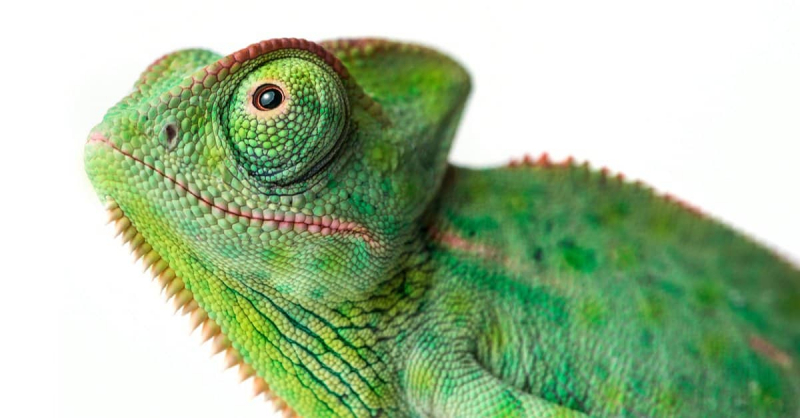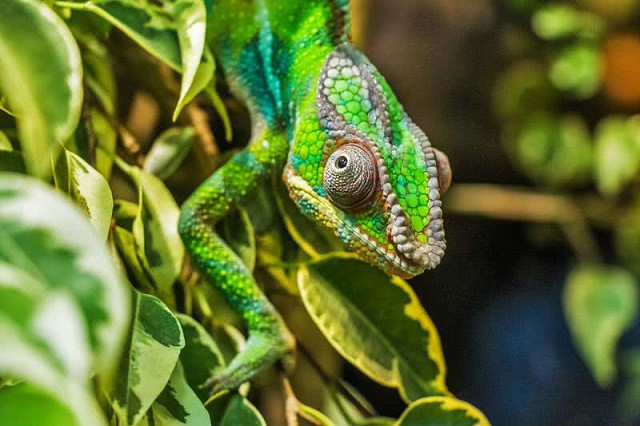Chameleon
Chameleons are not only masters of disguise, but they also boast the most vibrant eyes and the best animals that have the largest eyes. Their eyes are made up of many layers of skin. The eye facility, like their capacity to alter skin color, aids them in blending into the surroundings to avoid harm. The eyes of the chameleon can rotate 360 degrees. The animal may also convert from binocular to monocular vision.
For a vertebrate, the angle, or amplitude, of eye movement in chameleons is unusually great, and the eyes move independently of one another. This permits a chameleon to keep an eye on an approaching object while surveying the rest of its surroundings. Chameleon eyes extend laterally from the head, providing panoramic vision to the lizard. The eyes are protected by an eyelid that is united to the pupil, leaving only a little portion visible. Chameleons employ a technique of monocular focusing called corneal adaptation to estimate distance with a negative (nearsighted or concave) lens and a positive (farsighted or convex) cornea. The chameleon eye's unusual structure with isolated nodal and center points of the eye allows each eye to focus independently.
Because most chameleons are nocturnal, they have excellent eyesight to adapt to this lifestyle. Their eyes are 350 times more sensitive than human vision and color thresholds, to be exact. Even in low light, they can see colors vividly. Chameleons can also focus on items quite quickly.
Scientific Name: Chamaeleonidae
Eye Diameter: About 18 cm








